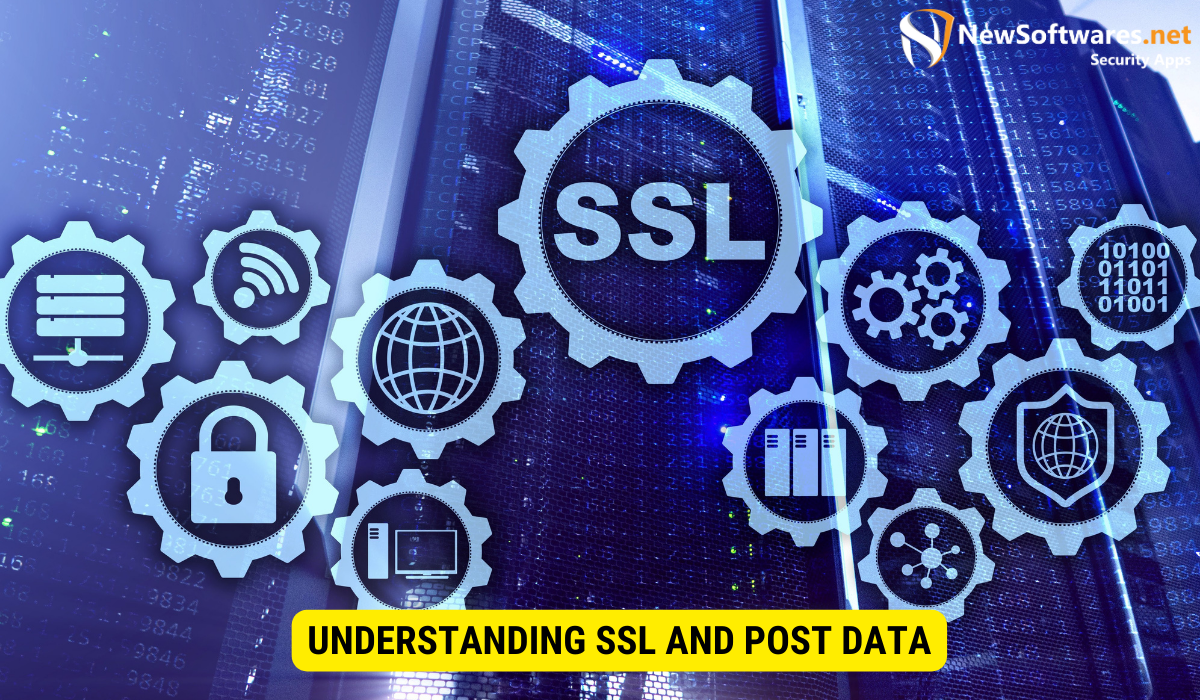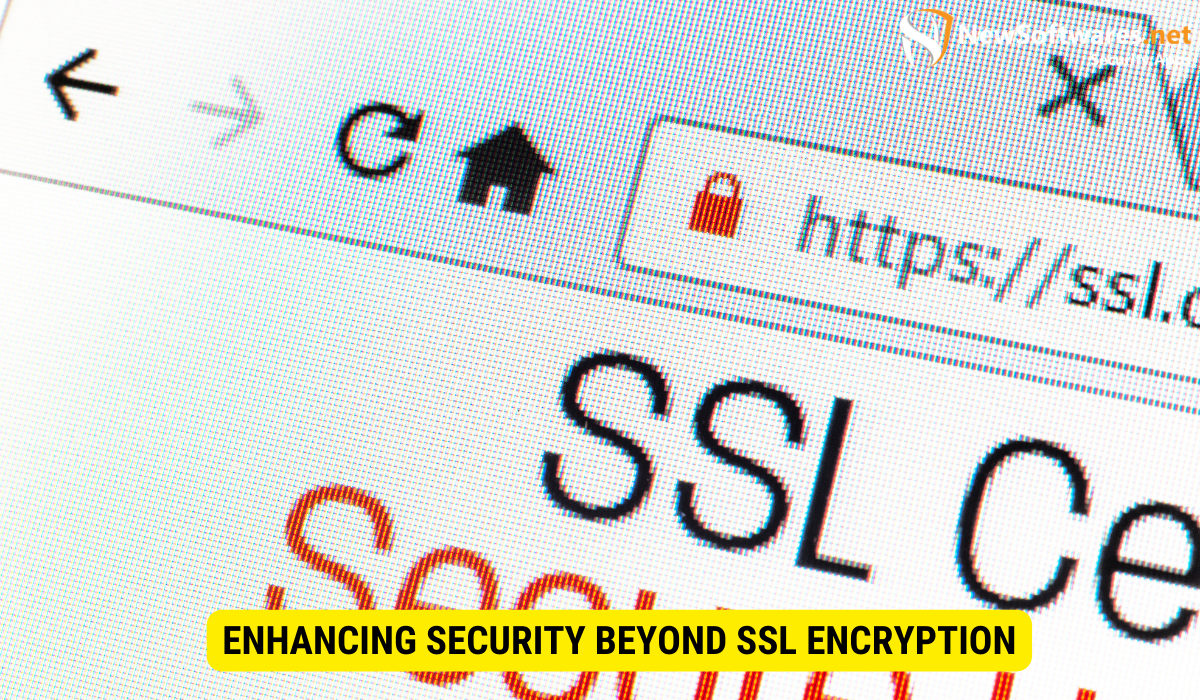Yes, SSL encrypts POST data. SSL encryption ensures that POST data remains secure during transmission, making it unreadable to any unauthorized individuals who may attempt to intercept it. By establishing a safe connection between a client and a web server, SSL encryption guarantees the confidentiality and integrity of POST data, providing a crucial layer of protection for sensitive information.
In today’s digital age, data security is of paramount importance. With online transactions becoming a norm for businesses and individuals alike, ensuring the confidentiality and integrity of sensitive information is crucial. One of the ways to protect data during transmission is through the use of SSL (Secure Sockets Layer) encryption. But does SSL encrypt POST data? Let’s delve deeper into understanding SSL and its role in securing POST data.
Understanding SSL and POST Data

What is SSL?
Secure Sockets Layer, is a cryptographic protocol that offers secure communication over the internet. It establishes an encrypted link between a web server and a client (e.g., a web browser), ensuring that data exchanged between them remains private and cannot be intercepted by malicious individuals.
The Role of POST Data in Web Transactions
POST data refers to the information that is sent from a customer to a web server when submitting a form or performing a transaction. It typically includes sensitive data such as login credentials, account information, or payment details. Protecting this data during transmission is crucial to prevent unauthorized access or tampering.
The Mechanism of SSL Encryption
How SSL Encryption Works
SSL encryption involves the use of cryptographic algorithms to transform plain text data into cipher text, making it incomprehensible to anyone without the appropriate decryption key. The encryption process occurs in three main steps: key exchange, symmetric encryption, and message authentication.
During the key exchange, the client and server negotiate a secure encryption method and exchange public keys. The public keys are used to establish a secure connection and generate a symmetric session key.
With the session key in place, the data sent between the client and server is encrypted using symmetric encryption algorithms such as AES (Advanced Encryption Standard). The symmetric encryption ensures the confidentiality of the data by making it unreadable without the session key.
In addition to encryption, SSL also provides message authentication to validate the integrity and authenticity of the data. This is achieved through the use of digital certificates, issued by trusted Certificate Authorities (CAs) and contain information about the server’s identity.
The Role of SSL in Securing POST Data
SSL plays a vital role in securing POST data during transmission. When SSL is enabled on a website, the data submitted through POST requests is encrypted using SSL algorithms. This ensures that even if an attacker intercepts the data while it’s in transit, they would not be able to decipher the encrypted information without the private key associated with the SSL certificate.
By encrypting POST data, SSL provides a strong layer of security, preventing eavesdropping, tampering, and unauthorized access to sensitive information. It gives users the confidence that their data remains confidential and undisturbed during online transactions or form submissions.
The Relationship Between SSL and POST Data
How SSL Protects POST Data
SSL protects POST data by encrypting it during transmission. When a user submits a form or performs a transaction on a website secured with SSL, the data is encrypted before being sent to the web server. This encryption process ensures that any information intercepted by an attacker remains useless and incomprehensible.
The encrypted POST data can only be decrypted by the web server with the private key associated with the SSL certificate. This means that even if an unauthorized individual manages to intercept the data, they will not be able to read or manipulate it without access to the private key.
Limitations of SSL in Encrypting POST Data
While SSL encryption provides a high level of security for POST data, it is not without its limitations. One particular limitation is that SSL only protects data while it’s in transit. Once the data reaches the web server, it is decrypted and stored in its original, unencrypted form.
This means that if the server or its databases are compromised, the stored POST data may be vulnerable to unauthorized access. To mitigate this risk, additional measures such as encrypting the stored data, implementing strong access controls, and regularly auditing the server’s security should be considered.
Common Misconceptions About SSL and POST Data
Debunking Myths About SSL Encryption
There are some common misconceptions about the effectiveness of SSL encryption when it comes to protecting POST data. Let’s debunk these myths:
Myth 1: SSL encryption is only necessary for websites handling sensitive data.
While it’s true that SSL encryption is essential for web handling sensitive information like login credentials or payment details, it is recommended for all websites. SSL helps to establish trust and ensures that the data transmitted between the customer and server remains confidential.
Myth 2: SSL encryption slows down website performance.
While it’s true that SSL encryption adds some overhead to the data transmission process, the impact on website performance is negligible. Advances in SSL technology and hardware acceleration have made SSL encryption faster and more efficient. The benefits of improved security far outweigh any minor impact on performance.
Clarifying Misunderstandings About POST Data Security
There are also some misunderstandings about the level of security provided by SSL encryption for POST data. Let’s clarify these misconceptions:
Misunderstanding 1: SSL encryption guarantees 100% protection against all types of attacks.
While SSL encryption does provide a high level of security, it is not invulnerable to all types of attacks. SSL primarily protects against eavesdropping and tampering during transmission. To ensure comprehensive security, other measures such as secure coding practices, strong access controls, and regular security audits should be implemented.
Misunderstanding 2: SSL encryption eliminates the need for other security measures.
SSL encryption is an essential component of a secure web environment. However, it should not be considered a standalone solution. Implementing other security measures, for example strong passwords, firewall protection, and regular software updates, is crucial to establish a robust defense against potential threats.
Enhancing Security Beyond SSL Encryption

Additional Measures for Securing POST Data
While SSL encryption provides a solid foundation for securing POST data, additional measures can further enhance data security:
- Implementing Strong Access Controls: Limiting access to sensitive data by implementing role-based access controls and strong authentication mechanisms can greatly reduce the risk of unauthorized access.
- Regular Security Audits: Conducting regular security audits can help identify vulnerabilities in the web environment and address them appropriately. It is essential to stay updated with the latest security best practices and address any potential weaknesses promptly.
- Encrypting Stored Data: Encrypting the stored POST data adds an additional layer of protection. In the event of a data breach, the encrypted information remains unreadable unless the attacker also compromises the encryption keys.
- Educating Users: User education plays a crucial role in preventing data breaches. Educate users about best practices for data safety, such as avoiding sharing sensitive information over unsecured networks or clicking on suspicious links.
- Keeping Software Up-to-date: Regularly updating the software and plugins used on the website helps patch security vulnerabilities & ensures that the latest security patches are applied.
The Future of Web Data Security
As technology continues to advance, so do the techniques used by malicious individuals to exploit vulnerabilities and gain unauthorized access to sensitive data. To stay ahead of these threats, it is essential to continuously evaluate and improve web data security measures.
Emerging technologies such as Transport Layer Security (TLS), the successor to SSL, aim to provide even stronger encryption and security features. Additionally, advancements in encryption algorithms and key management techniques will contribute to bolstering the security of web data during transmission.
Key Takeaways
- SSL encryption is a crucial component of securing POST data during transmission.
- SSL encrypts POST data, making it unreadable to unauthorized individuals.
- SSL provides key exchange, symmetric encryption, and message authentication to ensure data confidentiality and integrity.
- While SSL encryption enhances data security, additional measures like strong access controls and regular security audits should be implemented.
- Continued advancements in encryption technology and best practices will shape the future of web data security.
FAQs
Is SSL encryption necessary for all websites?
While SSL encryption is particularly important for websites handling sensitive data, it is recommended for all websites to establish trust and enhance data security.
Does SSL encryption slow down website performance?
While SSL encryption adds some overhead, advances in technology have minimized its impact on website performance. The benefits of enhanced security outweigh any minor performance impact.
Can SSL encryption protect data stored on a server?
SSL encryption only protects data while it’s in transit. Additional measures such as encrypting stored data and implementing strong access controls should be employed to secure data at rest.
What are the limitations of SSL encryption?
SSL encryption primarily protects data during transmission and is susceptible to attacks targeting vulnerabilities outside the encryption process. Other security measures are required to ensure comprehensive protection.
What is the future of web data security?
The future of web data security lies in emerging technologies like Transport Layer Security (TLS), advancements in encryption algorithms, and continual improvement of best practices.
Conclusion
In conclusion, SSL encryption plays a vital role in securing POST data during transmission. By encrypting the data, SSL ensures its confidentiality and integrity, protecting it from eavesdropping, tampering, and unauthorized access. While SSL provides a strong foundation for web data security, additional measures including strong access controls, regular security audits, and user education are necessary to establish a comprehensive defense against threats. As advancements in technology continue, the future of web data security promises even stronger encryption and enhanced protection for POST data.
